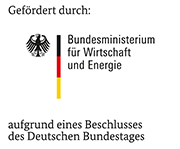16112 N

| Period: | 01.06.2009 - 30.06.2012 |
|---|---|
| Partner: | Prof. Dr. J. Rösler TU Braunschweig |
| Funder: | AiF |
| Project Manager: | Dr. Francesco Depentori |
| Research Group: | Corrosion |
Aims
The aim of the project is to develop innovative titanium alloys, that are characterized by low production and raw material costs, good castability and easy machinability. This will be achieved by the use of aluminium, iron, copper, molybdenum, lanthanum and silicon as alloying elements. Alloys designed this way will meet the requirements for small, middle and large-scale production. The main application fields will be automotive technology, chemical instruments or the food industry. A particular focal point will be the weight reduction of moving machine parts (e. g. the substitution of heavy steels) to decrease total energy consumption and CO2 emissions of machinery and plant.
General approach
All designed alloys will be characterized concerning the correlation between microstructure and thermo-mechanical treatment, as well as their corrosion properties. In cooperation with the industrial companies involved (titanium producers as well as new and potential users of the alloys) it will be examined, if the replacement of existing products with the new alloys in order to reduce costs is possible. Additionally, it will be clarified if there will be any new application field for the new alloys. Interdisciplinary cooperation of corrosion specialists and metallurgists will clarify which influences the newly added alloying elements copper, lanthanum and silicon will have on the mechanical, phase transitions and corrosion properties of the alloys. Fundamental knowledge of all the processes involved is required to introduce the new alloys into industrial applications.
Approach for corrosion measurements
The corrosion properties of the new alloys will be investigated using Scanning Kelvin Probe Force Microscopy (SKPFM) as well as potentiodynamic polarization tests, electrochemical impedance spectroscopy and exposure tests. Additionally, in-situ measurements with the Atomic Force Microscope in a fluid cell should clarify the corrosion mechanisms in more detail. Investigations with electron probe microanalysis (EPMA) will be used to provide detailed information about the composition of phases and intermetallic particles in the alloys.
Results
Both developed alloys show intermetallic, mostly lanthanum containing, particles,. In 1.5 weight% sodium chloride (NaCl) solution, the experimental alloy Ti-FM* shows a lower breakdown potential (1.4 V vs NHE) compared to Ti-FMS* (> 3 V vs NHE). Therefore, Ti-FMS can be estimated to be more stable. However, if Ti-FM gets hot forged, it shows a similar stability. Exposure tests of 20 days in 1.5 weight% NaCl show selective dissolution of intermetallic particles which is independent of the thermomechanical treatment or the alloy composition. The matrix itself shows no visual signs of corrosion damage. SKPFM measurements show voltapotential differences between the α- and β-phase (100 mV). Furthermore, both alloys show grain boundary oriented as well as "ingrain" particles that have a very low voltapotential compared to the matrix (up to 400 mV more negative). In some cases inhomogenous particles with areas of very positive voltapotential could be seen. These areas probably consist of high amounts of copper. First fluid cell measurements without external polarization show, that the particles increase strongly in volume before they dissolve, owing this to the formation of lanthanum hydroxide. This reaction also produces hydrogen. The dissolution of the particles happens very quickly. Ex-situ AFM measurements show that a thin protective layer (few nm) forms on the surface after longer exposure to 1.5 weight% NaCl. This layer only has a low mechanical stability. EPMA measurements show, that the intermetallic particles mainly consist of two regions. One region is pure lanthanum while the other region has a high copper content.
Future work
The above mentioned tests will be carried out in further solutions like diluted hydrochloric, sulfuric and nitric acid. In addition more tests with in-situ AFM with and without external bias will be conducted. Furthermore, the composition of the oxide layers before and after corrosion will be examined by highly surface sensitive methods like XPS.
back

Das IGF-Vorhaben Nr. 16112 N der Forschungsvereinigung DECHEMA e.V., Theodor-Heuss-Allee 25, 60486 Frankfurt am Main wurde über die AiF im Rahmen des Programms zur Förderung der industriellen Gemeinschaftsforschung (IGF) vom Bundesministerium für Wirtschaft und Energie aufgrund eines Beschlusses des Deutschen Bundestages gefördert.
Contact |
| Prof. Dr.-Ing. Wolfram Fürbeth |
| Telefon: +49 69 / 75 64-398 E-Mail: fuerbeth |